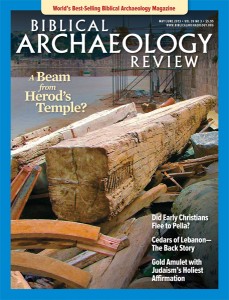
In 66 A.D., approximately 35 years after Jesus’ crucifixion, the Jews revolted against their Roman rulers, a revolt that ended in 70 A.D. with the burning of Jerusalem and the destruction of the Temple.
On the eve of its destruction, the followers of Jesus, later to be known as Christians, fled from Jerusalem to Pella on the other side of the Jordan River, according to the fourth-century church historian Eusebius of Caesarea:
“When the people of the church in Jerusalem were instructed by an oracular revelation delivered to worthy men there to move away from the city and to live in a city of Peraea called Pella, the believers in Christ migrated from Jerusalem to that place.”1
In 1967 Robert Houston (“Bob”) Smith of the College of Wooster, Ohio, initiated an archaeological excavation at Pella in the hope of finding evidence for this early Christian presence. Of course he also had many other questions about the site.
In addition to the 20-acre principal mound of Pella, a Civic Complex was constructed near the foot of the mound that extends into the Wadi Jirm. On the other side of the wadi rises Tell el-Husn, a natural hill that contains mostly cemeteries but also a fortress wall.
Already a library member? Log in here.
Institution user? Log in with your IP address.

